On April 9th, 1940, the Nazi war machine was unleashed on Norway. Sparked by Hitler's paranoia about an Allied intervention in Scandinavia, the plan involved seizing Norway's key cities using troops carried by the warships of the Kriegsmarine. In Oslo, the plan went awry when the Oscarsborg Fortress guarding the capital opened fire, sinking the heavy cruiser Blucher, delaying the attack long enough for the King and government to escape before the Germans took the city.
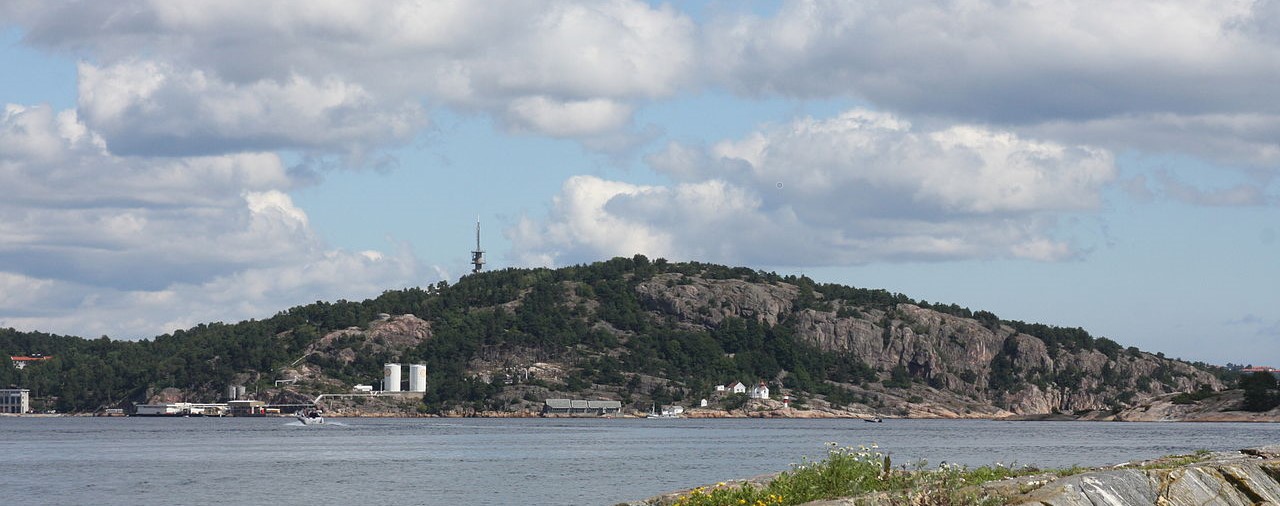
Odderoya island in modern times
But Oslo was far from the only target of the German attack. Southwest of Oslo was the city of Kristiansand, also home to a major naval base. Like Oslo, it was protected by coastal defenses that dated back to the early years of the 20th century. The main fortress at Odderoya was equipped with 4 24 cm howitzers, 2 21 cm guns and 6 15 cm guns, although it had been nearly abandoned in the late 20s, and plans for reactivation and modernization had never been carried out. AA defenses were even more sparse, and mines and torpedoes entirely absent. It was slightly better-manned than Oscarsborg, and some trainees had been ordered to man the 15 cm guns of the secondary fort at Gleodden on the 8th. Most of the defenders' attention that day was taken by dealing with the sinking of the German freighter Rio de Janeiro offshore, but even this wasn't enough to alert them to the impending threat.
The German attack force, led by the light cruiser Karlsruhe, augmented by torpedo boats Luchs and Seeadler, depot ship Tsingtau and seven S-boats, carried a thousand or so soldiers that had been supposed to unload starting around 0415. As usual during the invasion of Norway, things didn't go smoothly, and heavy fog kept them from approaching the coast until after daybreak. Both a seaplane and a patrolling auxiliary spotted them as they approached, but poor communication among the Norwegians (who by this point had received some reports from Oslo) meant that the pilot boat went alongside and put a pilot aboard Karlsruhe to guide them into harbor. The Norwegian would watch what happened from a corner of the cruiser's bridge.
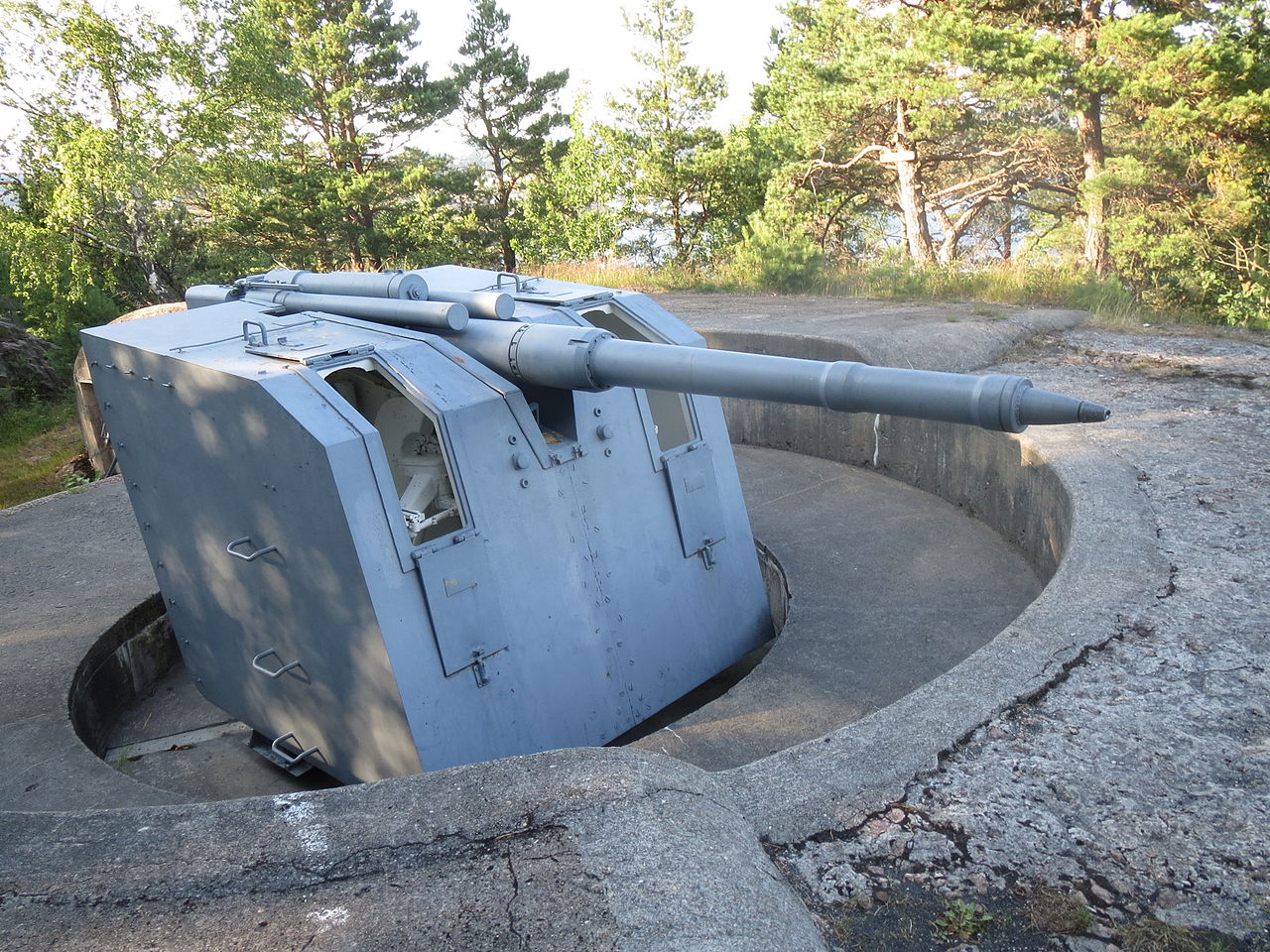
A 10.5 cm gun at Odderoya
The approaching force was sighted by the defenders of Kristiansand, and after a warning shot failed to deter them, the guns of the fortress opened up in earnest, concentrating on Karlsruhe. The Germans tried to fight back, but only the forward turret would bear, and between the disparity in firepower and a false alarm of a submarine, they soon turned back. The attack on the fortress was taken up by newly-arrived Luftwaffe bombers, one of which managed to set off a major magazine with a lucky hit. Beyond that, though, damage was minimal, and the defenders, though shaken, were still able to fight back. Offshore, the explosion was impressive enough to entice the ships back in, although they soon discovered their mistake. This time, however, Karlsruhe's gunnery was considerably more accurate, wounding a number of the defenders. The He111s that had previously bombed the fort were still overhead, and attempted to contribute to the attack by strafing, although they were kept at altitude by a pair of destroyers tied up in Kristiansand.1 The Norwegians fought their outdated guns well despite a number of technical problems, landing a number of shells close to their warships, but no hits were scored before the attacking ships withdrew out of range.
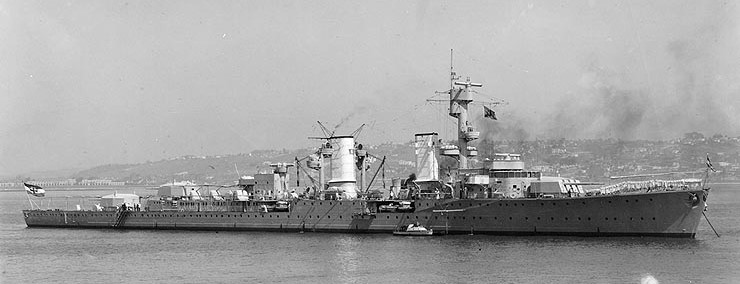
Karlsruhe
The Germans had by now realized that a direct duel probably wasn't in their favor, and after a plan for the torpedo boats to dash through under cover of fire from Karlsruhe was thwarted by fog, they settled for an indirect bombardment. In practice, this did little damage to the fort and landed shells in the city of Kristiansand, which had happened several times during the battle. Into the middle of this blundered the German merchantman Seattle, who had been transiting the Norwegian coast independent of the invasion and taken shelter when the fighting started. Her crew decided to make a break for safety, and the Norwegians unsurprisingly thought she was a troopship and shelled her, setting fire to her cargo of gasoline. A British recon flight spotted the burning freighter, but not the other ships lurking offshore.
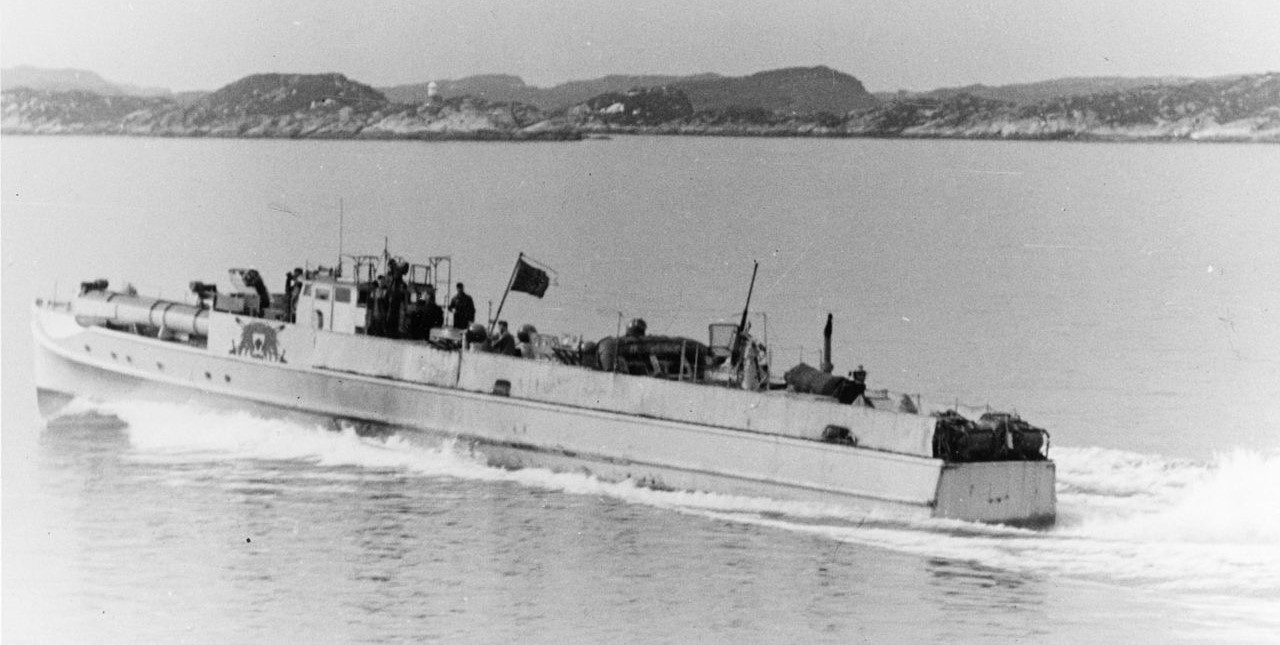
An S-boat off the coast of Norway
Aboard Karlsruhe, the situation was desperate. The decision was made to transfer the troops to the S-boats and send them on a do-or-die charge under cover from the big ships, and the transfer took until around 1030. This probably shouldn't have worked, but fog and Norwegian disorganization gave them a lucky break. Although some observers identified them as the same group which had attacked earlier, this wasn't passed on to the batteries, who believed the ships they saw were a different group. Adding to the confusion was a German signal flag that nearly matched the French tricolor, and led the Norwegians to hold their fire. To the amazement of their crews, the German ships managed to get all the way through the arcs of the fort's guns without a shot being fired, and when they anchored, they found little resistance ashore, as most of those tasked with defending the batteries from a land attack had been used to replace casualties at the guns. Odderoya's commander had driven down to the harbor to talk to the commander of the "French" force and didn't realize his mistake until he was halfway up the gangplank of Luchs. Soon, the fort, and the city, were surrendered, in time to avoid a second, heavier attack by Luftwaffe bombers responding to requests from the Germans. Ultimately, these would have probably been enough to force the fortress, protected by only a few AA machine guns, to surrender, although at a much greater cost in Norwegian lives than the seven soldiers and 13 civilians killed during the battle for Kristiansand.
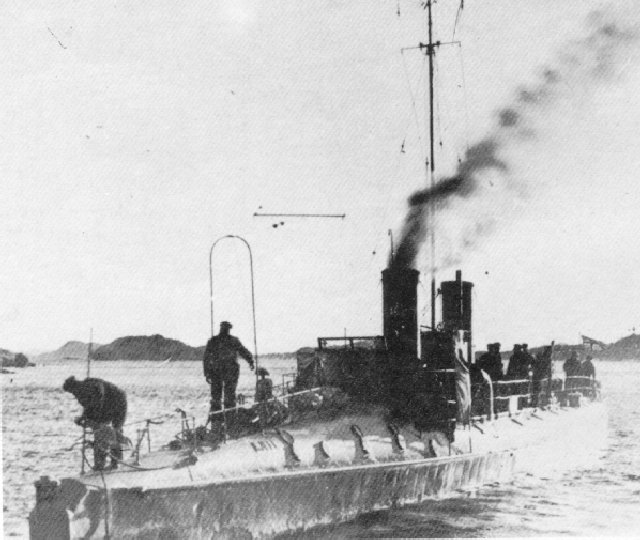
Kjell, a sister ship to Jo
The seizure of Kristiansand was supported by an attack on Arendal, a minor town with a cable hub, linking Oslo with both southern Norway and England. Torpedo boat Greif was detached from the Kristiansand force with a 90-man bicycle unit onboard, and minimal opposition was expected. Grief's approach was delayed by fog, but she was able to tie up in Arendal without a shot being fired, and began unloading her troops. The Norwegian torpedo boat Jo, dating back to 1905, was in harbor, but her crew were unable to identify the German vessel before she tied up, and unsure that their orders allowed them to engage even afterwards. Their torpedoes didn't bear, either, and before they could make a decision, Grief cast off for Kristiansand. Jo headed out to sea as well, and soon met up with two other similarly antique boats, who operated off the coast of southern Norway for the next week before dwindling coal supplies and the general confusion of the attack forced them to scuttle. Ashore, the bicycle troopers were able to secure the town with no violence, although they soon discovered that the cable station had been offline since December.
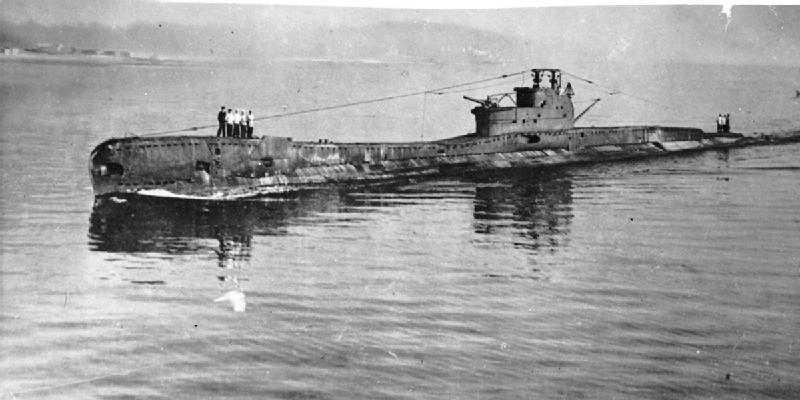
Truant
Kristiansand was hardly the finest hour of the Norwegian defenses, and attempts to defend southern Norway were further hindered by the near-total evacuation of the city, which was believed to be a major target for British counterattacks. The only bright spot came that evening, when British submarine Truant torpedoed Karlsruhe as she headed back to sea. Only one of the ten torpedoes fired hit, but it did serious damage, and the Germans chose to abandon ship rather than try to fight the flooding, and she was later scuttled by two more torpedoes from Greif. Truant escaped successfully despite an intense hunt by the German torpedo boats, who depth-charged her repeatedly, often close enough to spring leaks. But this was a minor bright spot in a sad story, and attention would instead focus on Stavanger, home to Sola, the most modern airfield in the country. We'll take a look there next time.
1 Unfortunately, this was the entire contribution of the Royal Norwegian Navy at Kristiansand. Despite the presence of the two destroyers and two very old submarines, nobody seemed interested in getting into the fight, and all of the ships surrendered to the Germans. ⇑

Comments
Thanks for doing this series - it's interesting to see a detailed outside view on history I know fairly well but cannot avoid taking an us-versus-them perspective on.
Do you have a feeling for how much the outdatedness of the guns mattered? Supposing the Norwegians had scored some hits, would the (presumably) modern armour of the light cruiser have defeated the (presumably) ancient shells they were firing? Or is it a case of a hit being a hit?
Sigh. They must have been very eager to believe that Allied reinforcements were coming. Or any reinforcements whatever.
While this is probably true in terms of the Actually Existing Norwegian Army on that day, it does seem to me that air attack wasn't all that formidable against fortifications, even old ones, in the early days of WWII. And this particular fortress had already stayed in the fight after a major magazine had been blown by a direct hit! Do you have a feeling for the extent to which air attack worked by demoralising the defenders, as opposed to making the situation really untenable even for very determined troops?
By the standards of April 9th this isn't looking that bad to me? They didn't get the lucky hit that Oscarsborg did, but they at least managed to fire their guns in earnest, and keep fighting through some fairly heavy fire. Compared to, say, Trondhjem, a much more major city with (on paper) heavier defenses, they seem to have fought well.
Couple of typos:
"Campaing" in the title.
"Odderya island" in two image captions - should be Odderøya. I note that "øya" means "the island", so your are in some sense calling it "the Odder island island" but this is a bit unavoidable in English. At least you didn't add another 'the' in front.
"Grief" in the attack on Arendal - should be Greif. Autocorrect?
It was essentially entirely about morale. It's only fairly recently (last ~30 years) that air attack has gotten to the point where it can reliably do lots of damage to fortifications with conventional weapons.
"Odderya island" is a result of the upload system stripping out special characters from file names, and me copying that mistake when I'm doing captions. As for Grief, that's just my fingers doing things without me thinking about them.
The older coast defense guns were probably still mounted en barbette, with little overhead cover. Strafing would have been highly effective at keeping the crews from working the guns while an invasion force dashed in. Defeating the fortress by pure air attack without a supporting land and sea element would be a tougher proposition, but if you're not planning on sending people in by land and sea you probably don't care about the fortress anyway.
If Norway had known the attack was coming and had time to mobilize, could they have held off the Nazis? Given that they would be outnumbered and badly outgunned by Germany, would the fact that it would need to be an amphibious invasion have been sufficient for force a stalemate? Or would they have lost anyway?
It depends on what your assumptions are. Assuming Norway joins the war on the French side at Poland and Sweden stays neutral (and is respected), with joint naval patrols attack from the sea is impossible.
However that would reshuffle the diplomatic deck considerably. If the overland route is on the table, things look much worse.
Considering how many lucky breaks went Germany's way in OTL - that one lucky torpedo from Oscarsborg is almost the only exception - I think it could have been done. Indeed I think it could even have been done if there had been an immediate announcement of full and general mobilisation, instead of what that idiot Ljungberg put out. If the coastal fortifications had been fully manned and ready for trouble, minefields laid out, war shots loaded ("Damn right we're firing war shots!"), officers mentally prepared to fight and knowing who the enemy was? The amphibious invasion that actually happened would have been a total disaster for Germany.
As for going overland, that seems to require Germany to send troops to Finland, presumably through the Baltic. If they respect Swedish neutrality then that's one hell of a long way to go on extremely bad roads and terrain (no railroad connecting Finnmark to the south before the Germans built one!), with your flank exposed to British naval raids, before you reach even so unimportant a city as Trondhjem.
I think you'd also assume that if Norway was going to fight off the Germans, that they'd also have managed to get a lot more British support.
My reading so far is that the British were defending Norway despite Norwegian efforts, rather than with them.
THis was before Dunkirk right? The British had heaps of military ground troops and equipment available.
If they HAD moved a bunch of that to Norway, they may not have lost it in France a few months later.
To clarify, by over-land I meant with/through Sweden.
If Sweden enters the war on Germany's side then Norway has a big problem, but this doesn't seem very likely to me. (Well, neither does Norway voluntarily breaking its neutrality; this alternate history clearly has Something Weird going on in Scandinavia.) If Sweden is neutral and Germany attacks it across the Baltic, or perhaps rather across Øresund, I don't know what happens but I do think the difficulty of projecting power across that water makes it a reasonably fair fight. The Swedes likely lose Skåne in the surprise, but they have lots of industry and population further north - Norway is much more centralised to Oslo and area, even in 1940. At any rate anyone coming overland through Sweden is going to give Norway time to mobilise, yea even unto the partial mobilisation by letter. Presumably the Norwegian Army, though lightly equipped, is rather more formidable if formed up to wartime strength and actually expecting to fight than it is on the thin rations we actually had. I think any such campaign makes the Allied intervention considerably bigger - likely with shouts of frantic relief from the French who don't have to fight on their own soil - and might actually bog down into the fairly static warfare everyone was expecting on the Western Front; the terrain is dreadful and the infrastructure is worse. Even if Sweden collapses, good luck moving formed units through the Keel, or absent-gods-help-us the Jotunheim, against serious opposition. In which case Scandinavia becomes a big, important theatre of operations like Africa was, and perhaps the Fall of France doesn't happen as in OTL, because too many of the necessary units are committed across the Baltic.
But obviously this is all very speculative. After all Poland had its army, much larger than Norway's, mobilised, and still collapsed in six weeks. Of course Poland has a long land border with Germany and no terrain to speak of, plus they were stabbed in the back by Russia.
I take your point about the terrible mountainous terrain on the border. I am trying to do the math in my head, is the Norwegian Army at full strength big enough to defend EVERY pass on the border? Part of me fears an archipelago of coastal hold outs (all-be-it very well dug in) amid a brown sea. I wonder if the sea-lanes to Britain could be kept open under those circumstances.
I guess you could shorten the line drastically by writing off some provinces. Then again, Poles were unable to do that politically, even though, they knew war was coming.
Regarding France, I agree 100% that they would be thrilled with idea of it being someone else's homeland that gets destroyed in this war. However, I wonder how much help they would want to send. I feel like Germany could move men in and out of Scandinavia much faster than the France could. Maybe that makes it easier for Paris to fall.
I guess my point, over all, was that for Norway, leaping whole-heartedly into the arms of Britain was a course of action fraught with peril. Maybe it works out better maybe worse.
I guess, at the end of the day, it doesn't make sense to ask, "If the Norwegian state were better lead and prepared, how would the fighting have gone?" Because, then Britain and Germany wouldn't have smelled blood to start with.
In every battle we've looked at so far, an alert and well-led infantry battalion in the right place probably would have been enough to change the outcome. The whole invasion was a fantastical shoestring operation, and it almost certainly wouldn't have worked if the Norwegians had just paid attention to their own intelligence and ordered a general mobilization based on it. The odds of it working if Norway was actually in the war were essentially zero. Remember, Germany basically used every ship and plane available to lift troops for the invasion as it happened. So there's no margin to bring more troops. You could concentrate in fewer areas, but that maybe nets you control of Oslo and Kristiansand, assuming that Oscarsborg doesn't turn you into a pulp.
They did sort of try this. Keep in mind that we're something like half or two-thirds of the way through the first day of the battle, and more things happened afterwards. The British troops around Narvik weren't evacuated until after the Fall of France, when the changed naval situation meant that forces weren't available to keep their lines of communication open.
I think it's pretty clear that the naval invasion we actually had, could have been fought off by Norway's actually-mobilised neutrality watch if it had gotten a war warning on the evening of the 8th, as the Cabinet of that day should certainly have done; much less if it had been met by an actual full mobilisation of Norway's defenses, with minefields and all. And it was at the limit of Germany's ability to project power overseas so you can't repair it by giving them more guns. The Norwegian campaign is one more example of the demonic luck that carried Hitler to the gates of Moscow and you can't really shake it up any without breaking it.
The overland invasion through Denmark and Sweden - noting that at that time there were no bridges over Øresund or the Belts! - is an entirely different war, and does play to Germany's strengths much better. In particular, armoured divisions and skilled officers to lead them. Then you have to ask, what side is Sweden on? What side is Finland on, if any? (Having just come off the Winter War.) How much support are the Western Allies sending, when, and does it include a battleship in Storebælt? Probably not because you don't want to send 1940 battleships into range of your enemy's land-based aircraft, and really, Storebælt is just asking for it; but on the other hand a destroyer flotilla would have much the same effect.
The whole of the Swedish-Norwegian border, all literally one thousand miles of it? (Really, it's 1630 kilometers.) Nah. Obviously not. But those parts of it that have, like, roads? Now we're talking.
Norway (and Sweden) north of Trondhjem is (even now, much less in 1940) a howling trackless wilderness. There are, like, game trails. It's not that it's literally impassable, there were Resistance fighters and Jews snuck across the border all through the occupation; but there's a difference between a small party on foot carrying enough food for a few days, and actual military logistics.
Wiki says (in Norwegian, sorry) that there are 64 border crossings between Norway and Sweden; that's in this year 2021. Subtract some for 80 years of building infrastructure, add some because logistics or not a tank does have some off-road capability, and note that well over two-thirds of them are south of Trondhjem.
Moreover, 90% of Norway's population (and all of its industry except the moonshine distilleries; on the other hand you can likely run tanks on that stuff) is south of Trondhjem. And in 1940 there's no railroads running north of that city either. You may not be able to get the politicians to officially write off Nordland and Troms, but just in terms of the prewar distribution of the mobilisable units they've pretty much done so already. (Excepting the 6th division which guarded the Russian border, and presumably it sails south as fast as Britain can find transports for it.) And then the Germans probably write off those areas as well, because why bother? There's no roads, no population, no industry, no strategic importance, and Narvik is useless without occupying the many fine harbours on the western coast of Norway.
However, I don't think you can gain anything by writing off any province from Trondhjem down south, because there's a set of valleys running north-south from Trondhjem to Oslo that contains something like two-thirds of Norway's population (and where the OTL campaign was basically fought, the units that invaded Oslo trying to link up with the ones that invaded Trondhjem). So you have to defend the entry points to that valley or you're left with the "kingdom of Vestland" centered on Bergen. Which admittedly is pretty defensible in its own right but conversely, not much of a base for retaking the eastern valleys.
But in the end this is a totally different war. Fire up HoI4 and try it out, noting that it's made by a Swedish company and the balance of power in Scandinavia may not be entirely accurate. : )
Edit alert: For complicated reasons, I missed an important coda to the Kristiansand campaign, the sinking of Karlsruhe by HMS Truant on the afternoon of the 9th. I have edited this into the last paragraph.
Hello, I am a student conducting thesis research on the Norwegian campaign. I have a particular interest in the manning percentages of Norwegian coastal defenses during the campaign. I am specifically trying to reinforce my claim that had the Norwegians fully mobilized and manned their defenses, they would have stood a greater chance at inhibiting the german invasion. Any help would be appreciated. Thank you!
The book I used as the main source for this series is Haarr's The German Invasion of Norway. It should have at least most of the detail you want, and I would be surprised if your library couldn't lay hands on it fairly quickly, as it's not particularly obscure.
(I am entirely in agreement with your basic theory, by the way. There are several places an alert infantry battalion could have destroyed the Germans, and the person who said I occasionally sounded like I was personally offended at how well the Germans did wasn't exactly wrong.)